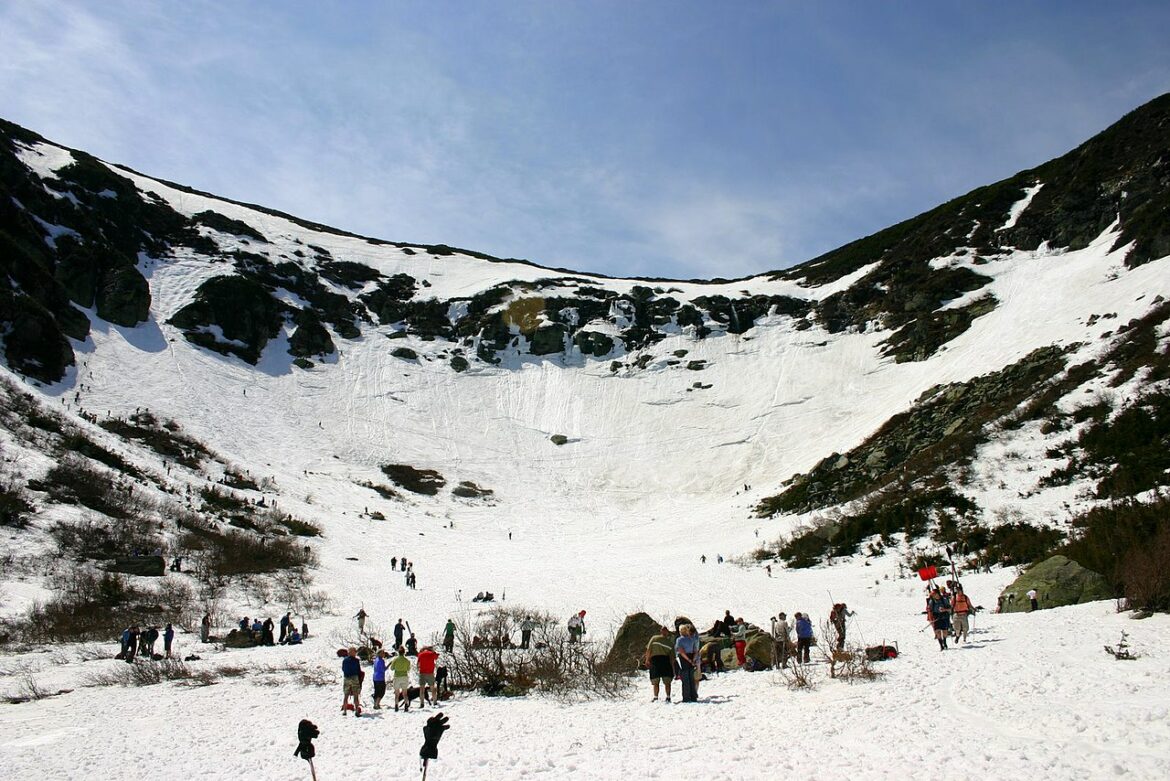Pinkham Notch, NH – On Saturday afternoon March 9, Madison Saltsburg, age 20, fell roughly 600 vertical feet down Tuckerman Ravine on Mount Washington and suffered fatal traumatic injuries during the fall. The responding team from the US Forest Service, Mount Washington Avalanche Center worked to evacuate Saltsburg off the mountain.
Throughout the year, this very steep ski mountaineering terrain, and other areas around Mount Washington, are subject to ever changing mountain hazards. These commonly include avalanches, open crevasse holes, icy steep slopes, and falling rocks and ice. On March 9, Saltsburg and her skiing companion were faced with hard, icy snow surfaces, open crevasse holes, and unforgiving conditions for a slip and fall.
In addition to yesterday’s fatality, the MWAC Snow Ranger team responded to two other skiers who sustained traumatic injuries from rocks and ice while falling down the firm and icy snow surface. Multiple other falls in steep mountaineering terrain were also witnessed throughout the day, but did not result in serious injuries.
Conditions in Tuckerman Ravine and around Mount Washington were firm and icy due to lack of recent snow and cold temperatures. Traveling in avalanche terrain in these conditions safely requires careful use of mountaineering tools and equipment including crampons, ice axe, and the skills to use them. The avalanche forecast for March 9 was LOW, meaning that avalanches are unlikely. In the forecast, Springtime Mountain Hazards were identified as being the most significant risk to travelers during the day. These hazards include refrozen snow surfaces (as seen this day), falling ice, and crevasses in the snowpack.
The US Forest Service encourages anyone traveling in avalanche terrain to take precautions to mitigate the risk of traveling around many different mountain hazards. This includes:
- Seeking information to inform when, how, and where you travel in the mountains. This includes the MWAC Avalanche Forecast and the Mount Washington Observatory Higher Summits Forecast
- Carrying crampons, an ice axe, and a helmet in steep mountaineering terrain.
- Carrying an avalanche beacon, shovel, and probe when traveling in avalanche terrain.
- Carrying navigation tools to plan safe routes, even in poor conditions.
The Mount Washington Avalanche Center website www.mountwashingtonavalanchecenter.org/ is updated daily with current conditions.






